In today’s world, where every penny counts, homeowners are always looking for ways to save money. One area where you can cut costs is by performing DIY furnace maintenance. Not only will this help you save on repair bills, but it will also ensure that your furnace operates efficiently, keeping your home warm during the cold months. In this article, we will explore some essential DIY furnace maintenance tips for homeowners.
Safety First: Turn Off the Power
Before you begin any maintenance, your safety should be your top priority. Turn off the power to your furnace to prevent any accidents.
Gather Your Tools
To perform proper maintenance, you’ll need some tools, such as screwdrivers, pliers, a vacuum cleaner, and lubrication oil. Make sure you have everything you need before you start.
Replace or Clean the Air Filter
A clogged air filter can reduce your furnace’s efficiency. Check your filter monthly and replace it if it’s dirty. If you have a reusable filter, clean it according to the manufacturer’s instructions.
Inspect and Clean the Vents and Ducts
Inspect your vents and ducts for any obstructions or debris. Vacuum them to ensure proper airflow throughout your home.
Check the Thermostat
Make sure your thermostat is working correctly. Replace the batteries if necessary and ensure it’s set to the right temperature.
Lubricate Moving Parts
Lubricating the moving parts of your furnace is crucial for its smooth operation. Here’s how you can do it:
Locate The Moving Parts
Lubricate Moving Parts
Lubricating the moving parts of your furnace is crucial for its smooth operation. Here’s how you can do it:
Locate The Moving Parts
Locate The Moving Parts
First, identify the moving parts that require lubrication. These typically include the blower motor and any bearings or pulleys.
Choose The Right Lubricant
Select the appropriate lubricating oil recommended by your furnace’s manufacturer. Using the wrong type of oil can damage your furnace.
Apply Lubricant Carefully
Apply a few drops of lubricant to each moving part. Be careful not to over-lubricate, as excess oil can attract dust and dirt.
Check And Replace Belts
Inspect the belts connected to the blower and other moving parts. If they appear worn or cracked, replace them to prevent breakdowns.
Inspect the Pilot Light
The pilot light is a crucial component of many gas furnaces. Here’s how to ensure it’s in good working condition:
Turn Off The Gas Supply
Before inspecting the pilot light, turn off the gas supply to your furnace. Safety should always come first.
Observe The Flame
Turn the furnace back on and observe the pilot light. It should burn a steady blue flame. If it flickers or appears yellow, it may need adjustment.
Adjusting The Pilot Light
If the pilot light needs adjustment, consult your furnace’s manual or contact a professional technician for guidance.
Examine the Electrical Connections
Faulty electrical connections can pose a fire hazard and affect your furnace’s performance. Here’s how to inspect them:
Turn Off The Power
As a safety precaution, turn off the power to your furnace before inspecting the electrical connections.
Look For Loose Or Damaged Wires
Carefully examine the wires and connections for signs of wear, damage, or looseness. Tighten any loose connections and replace damaged wires.
Ensure Proper Insulation
Make sure all wires have proper insulation to prevent electrical shorts. Replace any damaged insulation.
Clean the Blower
The blower is responsible for circulating warm air throughout your home. Keeping it clean is vital for efficient heating:
Remove The Blower Cover
Turn off the power and remove the blower cover to access the blades.
Clean The Blades
Use a soft brush or cloth to clean the blower blades gently. Ensure there is no dust or debris buildup.
Check The Motor
Inspect the blower motor for any obstructions or signs of wear. If you notice any issues, contact a professional technician.
Inspect and Clean the Flame Sensor
A dirty flame sensor can lead to furnace malfunctions. Here’s how to clean it:
Locate The Flame Sensor
Find the flame sensor inside your furnace. It’s usually a small, metallic rod near the burners.
Remove And Clean The Sensor
Carefully remove the flame sensor and clean it with a fine abrasive pad or sandpaper to remove any residue.
Reinstall The Sensor
Once cleaned, reinstall the flame sensor in its original position.
Conclusion
Regular DIY furnace maintenance is a smart investment for homeowners. It not only keeps your furnace running smoothly but also ensures the safety and comfort of your home.
